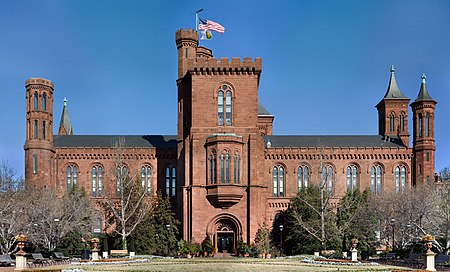Oral skills
|
Read other articles:

1907 novel by L. Frank Baum Policeman Bluejay First editionAuthorL. Frank Baum (as Laura Bancroft)IllustratorMaginel Wright EnrightCountryUnited StatesLanguageEnglishSeriesThe Twinkle TalesGenreFantasyPublisherReilly & BrittonPublication date1907Media typePrint (hardcover) Policeman Bluejay or Babes in Birdland is a children's novel written by L. Frank Baum and illustrated by Maginel Wright Enright. First published in 1907, Jack Snow considered it one of the best of Baum's works.[1&…

حزب الديمقراطية والتقدم / الحزب الاشتراكي البلد بوركينا فاسو تاريخ التأسيس 2001 المقر الرئيسي واغادوغو الأفكار الأيديولوجيا الاشتراكية الاشتراكية الديمقراطية الاشتراكية الديمقراطية الموقع الرسمي الموقع الرسمي تعديل مصدري - تعديل حزب الديمقراطية والتقدم / …

Airport in Redlands, CaliforniaRedlands Municipal AirportIATA: L12ICAO: KREISummaryAirport typePublicOwnerCity of RedlandsLocationRedlands, CaliforniaElevation AMSL1,571 ft / 478.8 mCoordinates34°05′07″N 117°08′47″W / 34.08528°N 117.14639°W / 34.08528; -117.14639MapRedlands Municipal AirportShow map of CaliforniaRedlands Municipal AirportShow map of the United StatesRunways Direction Length Surface ft m 8/26 4,505 1,373 Asphalt Redlands Municipa…

Libertarian political migration Free State ProjectFormationSeptember 1, 2001; 22 years ago (2001-09-01)Headquarters373 South Willow St #161, Manchester, New Hampshire, U.S.Websitefsp.org This article is part of a series onLibertarianismin the United States Schools Agorism Anarcho-capitalism Austro Autarchism Bleeding-heart Christian Consequentialist Feminist Fusionism Geo Green Market anarchism Minarchism Natural-rights Neo Paleo Panarchism Paternalist Propertarianism Techno Tr…

Biblical figure and the sixth son of Jacob through his concubine Bilhah This article is about the Biblical figure. For people named Naphtali, Naftali or Naftoli, see Naphtali (name). For Israelite Tribe of Naphtali, see Tribe of Naphtali. NaphtaliנַפְתָּלִיPainting by Francisco de Zurbarán (from Jacob and his twelve sons, c. 1640–45)PronunciationNaphtaliSpouseMerimahChildrenJahziel (son)Guni (son)Jezer (son)Shillem (son)[1]ParentsJacob (father)Bilhah (mother)RelativesReuben …

American audio equipment company Skullcandy Inc.Company typeSubsidiaryIndustryAudioFounded2003FoundersRick Alden and Cris WilliamsHeadquartersPark City, Utah, U.S.Key peopleJason Hodell (CEO)ProductsHeadphonesAudio equipment, audio accessoriesRevenue$266.3 million (2015)[1]OwnerMill Road Capital[2]Websitewww.skullcandy.com Skullcandy Inc. is an American company based in Park City, Utah, that markets technology such as headphones, earphones, Bluetooth speakers and other products.&…

Kolhapuri redirects here. For other uses, see Kolhapuri (disambiguation). City in Maharashtra, IndiaKolhapurCityMahalakshmi Temple, KolhapurReliance Mega Mall KolhapurNational Highway-4Jotiba templeNew Palace, KolhapurRankala Lake New Terminal at Kolhapur AirportNickname: Karveer[1]KolhapurLocation in Maharashtra, IndiaShow map of MaharashtraKolhapurKolhapur (India)Show map of IndiaCoordinates: 16°41′30″N 74°14′00″E / 16.69167°N 74.23333°E / 16.69…

Metropolitan area in the U.S. state of Alaska Metropolitan Statistical Area in Alaska, United StatesAnchorage metropolitan areaMetropolitan Statistical Area Anchorage MSADowntown AnchorageMap of Anchorage, AK MSA Anchorage Municipality Matanuska-Susitna Borough Country United StatesState AlaskaArea • Metro27,205 sq mi (70,461 km2)Population (2022) • Metro398,807GDP[1] • Metro$31.569 billion (2022)Time z…

Building in Houston, Texas, United States M.O. Campbell Educational CenterLocation1865 Aldine-Bender Road Houston, Texas 77032OwnerAldine Independent School DistrictCapacity7,000 (est.)SurfaceRobbins BioCushion hardwood floor for basketball and volleyballScoreboardfour-sided, center-mountedOpened1996TenantsAldine Mustangs Davis Falcons Eisenhower Eagles MacArthur Generals Nimitz Cougars The M.O. Campbell Educational Center is an indoor arena in Houston, Texas. The facility serves as the home bas…

Bombing by the United States against militia groups in Syria June 2021 United States airstrike in SyriaPart of the American-led intervention in the Syrian civil warLocation of Deir ez-Zor Governorate in SyriaTypeAir interdictionLocationImam Ali military base, Abu Kamal border crossing, Abu Kamal, Deir ez-Zor Governorate, SyriaPlanned by United StatesCommanded byJoe BidenTarget Kata'ib HezbollahKata'ib Sayyid al-ShuhadaDate28 June 2021 (2021-06-28) (local time, UTC+3…

This article is about the Chevrolet Chevelle Laguna. For general Chevelle information, see Chevrolet Chevelle. Motor vehicle Chevrolet Chevelle Laguna1974 Chevrolet Chevelle Laguna Type S-3 Colonnade hardtop coupeOverviewManufacturerChevrolet (General Motors)Production1972–1976Model years1973–1976AssemblyArlington, Texas, United StatesAtlanta, Georgia, United StatesBaltimore, Maryland, United StatesFlint, Michigan, United StatesFramingham, Massachusetts, United StatesFremont, California…

هذه المقالة سلسلة حولالسياسة المحافظةفي الولايات المتَّحدة مدارس الرحيمة الماليَّة الاندماجيَّة الليبرتاريَّة الحراكيَّة الجدد الأصليون التقدميَّة الاجتماعيَّة التقليدويَّة الترامبيَّة مبادئ الخصوصية الأمريكيَّة ليبرالية كلاسيكية قيم عائلية سوق حر تجارة حرَّة قيم ي�…

11th-century Norman nobleman and royal official in England Robert DespenserThe Château de Tancarville in Normandy.Despenser was a tenant of the lords of Tancarville.Royal stewardIn officec. 1088 – c. 1098Preceded bynone Personal detailsBornunknown - before 1066NormandyDiedc. 1098England Robert Despenser (sometimes Robert Despensator,[1] Robert Dispenser,[2] or Robert fitzThurstin;[3] died after 1098) was a Norman officeholder and landholder in post-Conquest me…

伊比卡雷Ibicaré市镇伊比卡雷在巴西的位置坐标:27°05′31″S 51°21′54″W / 27.0919°S 51.365°W / -27.0919; -51.365国家巴西州圣卡塔琳娜州面积 • 总计150.512 平方公里(58.113 平方英里)海拔550 公尺(1,800 英尺)人口(2007) • 總計3,390人 • 密度22.5人/平方公里(58.3人/平方英里) 伊比卡雷(葡萄牙语:Ibicaré)是巴西圣卡塔琳娜…

Village in Glarus, SwitzerlandMattVillage (and former municipality) Coat of armsThe former municipal area (2007)Coordinates: 46°58′N 9°10′E / 46.967°N 9.167°E / 46.967; 9.167CountrySwitzerlandCantonGlarusMunicipalityGlarus SüdArea • Total41.27 km2 (15.93 sq mi)Elevation831 m (2,726 ft)Population (December 2020) • Total361 • Density8.7/km2 (23/sq mi) Matt is a village, and former municipality, …

Henri I dari Portugal adalah kardinal sekaligus Raja Portugal. Kardinal Thomas Wolsey Kardinal mahkota (bahasa Italia: cardinale della corona)[1] adalah seorang kardinal pelindung dari sebuah negara Katolik Roma, dinominasikan atau dimajukan oleh seorang penguasa monarki Katolik untuk menjabat sebagai perwakilan mereka di Dewan Kardinal[2][3] dan, jika diperlukan, mengambil jus exclusivae.[4] Secara lebih umum, istilah tersebut merujuk kepada seorang kardinal …

Badminton championships European Para-Badminton ChampionshipsMost recent season or competition:#2018 RodezFounderPara Badminton World Federation (now part of the BWF)First season1995 The European Para-Badminton Championships is a tournament organized by the Para Badminton World Federation (PBWF) which has now merged with the BWF. This tournament is hosted to crown the best para-badminton players in Europe. The inaugural edition of the tournament was hosted in Stoke Mandeville, England in 1995. C…

This list is incomplete; you can help by adding missing items. (August 2008) Serralles Castle museum in Ponce, Puerto Rico This list of museums in the unincorporated territories of the United States encompasses museums defined for this context as institutions (including nonprofit organizations, government entities, and private businesses) that collect and care for objects of cultural, artistic, scientific, or historical interest and make their collections or related exhibits available for public…

17-я кавалерийская дивизия Червонного казачества Вид вооружённых сил сухопутные Род войск (сил) конница Почётные названия отсутствуют Формирование 3 июля 1918 года Расформирование (преобразование) 18 декабря 1918 года Награды отсутствуют Преемственность Предшественник отсут�…

Massive theorem assigning all but 26 finite simple groups to a few infinite families Algebraic structure → Group theoryGroup theory Basic notions Subgroup Normal subgroup Group action Quotient group (Semi-)direct product Direct sum Free product Wreath product Group homomorphisms kernel image simple finite infinite continuous multiplicative additive cyclic abelian dihedral nilpotent solvable Glossary of group theory List of group theory topics Finite groups Cyclic group Zn Symmetric group Sn Al…



